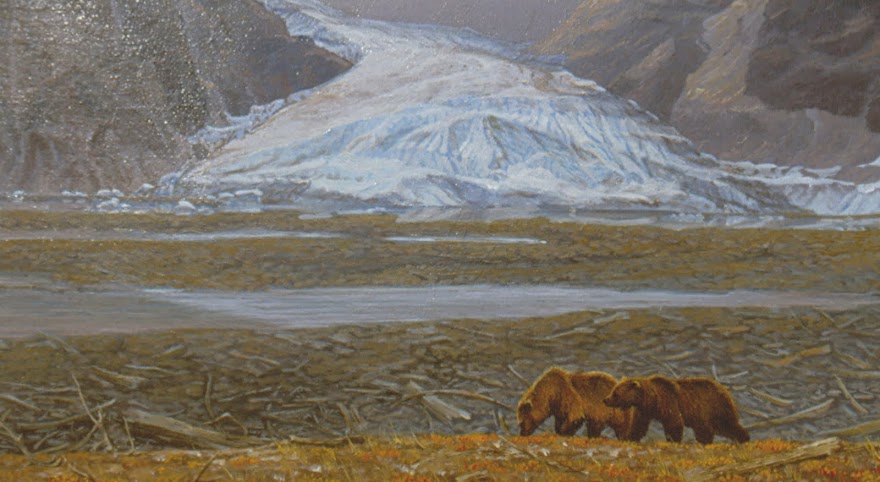Let's go back to the Ecuadorian cloud forest to see a small sampling of it's other bird life.
One family of birds that competes with the hummingbirds for their beauty are the tanagers and their relatives. One of the less striking representatives of the family is this female, White-lined Tanager. Unfortunately I was not fast enough on the draw to get decent photos of the more colorful species like. Blue-winged Mountain Tanagers, Grass Green Tanagers, Golden Tanagers, Beryl-spangled Tanagers, on and on. There are so many impressive species.
There are very few woodpeckers in this region. It seems strange, considering the abundance of moss laden trees everywhere. That particular habitat is taken up by the many species of woodcreepers and allies like tree haunters and foliage gleaners. One of the largest of them is the woodpecker sized, Strong-billed Woodcreeper.
While I was photographing hummingbirds on the back porch of my room, this tiny, White-sided Flowerpiercer dropped in to bathe in a small bowl, nearly at my feet.
Photographing birds in the dim light of the cloud forest can be challenging. It is so hard to get sharp images when you are forced to shoot at very slow shutter speeds. This is a confiding, Golden-crowned Flycatcher.
Unfortunately, like everywhere, this habitat is being degraded by the spread of human development. Most of the cloud forest has already been cleared. Who knows what species have become extinct even before they became known to science. This is marginal, (steep) farmland at best. That does not stop the deforestation.
One poor subsistence farmer named Angel Paz, was faced with the need to clear more of his forested land in order to make ends meet. However, he loved the many birds that lived in the forest and did not want to see them disappear.
There was a breeding lek of the spectacular, Andean Cock of the Rock at the bottom of the ravine below his farm. He knew about the foreigners who were coming to the area to see the many birds of the cloud forest so he decided to try to convert his land into a bird refuge.
Mostly through word of mouth, birders started showing up the see the elusive, Cock of the Rock. He charged $5.00 per person, and led them down to the lek. Soon his financial woes were over as more and more birders showed up. Professional birding companies added Paz de Aves to the itinerary.
The photo above is a male Cock of the Rock taken with a hand held camera at a shutter speed of about two seconds. Other choice birds that can be seen on Angel's land are, Golden-headed Quetzal, Toucan Barbet, Dark-backed Wood Quail, and so many other hard to find species.
One very elusive family of birds that birders salivate over are the antpittas. Several species occur at Paz de Aves. They are almost impossible to see. Angel, very slowly, would creep up to his antpittas and toss grubs to them. It took many months, but over time he got several individuals to accept his presence.
Word got out, and more locals started feeding antpittas on their own land. This Chestnut-crowned Antpitta was photographed with a very slow shutter speed on another farmer's land. The practice of enticing antpittas with grubs, out into the open has spread throughout much of the Andes and beyond.
The abundant, Smooth-billed Ani is actually becoming scarce in many areas. Not the lower slopes of the Western Andes in Ecuador.
Another slow shutter speed produced a terrible photo of one of the most highly sought after cloud forest birds, Plate-billed Mountain Toucan.
This is my idealized portrait of the Plate-billed Mountain Toucan.











































